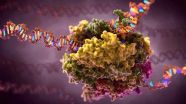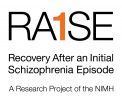(Press-News.org) A new, innovative "dashboard" from the National Institute of Standards and Technology (NIST) won't help you drive your car, but it will help enable reproducible research in biology.
In a recent paper in the journal Nature Communications,* an international multi-laboratory team demonstrates a new software tool, the "erccdashboard," to evaluate the performance of experimental methods used to study gene expression. The analysis tool is designed for use with RNA spike-in controls developed by the NIST-hosted External RNA Controls Consortium (ERCC**). These ERCC controls are produced from the DNA Sequence Library for External RNA Controls (Standard Reference Material 2374) that was issued by the agency in 2013.
"In gene expression experiments, scientists try to understand how a cell's biological activities arise from the genetic information contained in its genome by simultaneously quantifying the thousands of RNA molecules expressed by that genome," says Sarah Munro, lead author on the Nature Communications paper.
Munro says that the validation provided by the erccdashboard is essential to ensure that these complex experiments are reproducible. "The results of gene expression experiments are often used in making medical decisions such as identifying which drug is best for a particular patient," she explains. "Our new software tool gives researchers the ability to gauge the performance of their methods for any experiment, evaluate repeatability and reproducibility of experiments over time and between laboratories, and provide confidence that the results can be trusted."
The erccdashboard provides the first standardized approach for any lab to evaluate the quality of its gene expression analyses. The ERCC spike-in control materials are derived from NIST SRM 2374, which consists of 96 different DNA molecules, each with a specific certified gene sequence. The distinct RNA molecules produced from this DNA can be mixed together in a "cocktail" of defined proportions and then used to "spike" biological samples of RNA molecules. The RNA "spike-in" molecules act as controls to check the technical performance of the experiment. To avoid interfering with the measurements made of the sample RNA molecules, the ERCC control RNA sequences are designed to be different from the RNA sequences found in the types of mammalian cells that many researchers study, such as human or mouse cells.
Previously, Munro says, there was no standard, technology-independent approach for analyzing the data obtained from gene expression experiments. "The ERCC control materials made the development of our new method validation tool, the erccdashboard, possible," she explains.
The new NIST software, Munro says, provides a simple 'turnkey' mechanism for biologists to assess any gene expression experiment. "Its performance metrics are designed to be independent of the type of measurement technology used for an experiment, so results can be compared as technologies improve over time," she says. "Using the dashboard will enable reproducible research and prevent researchers from drawing erroneous conclusions from low-quality experimental data."
Munro says that the next goal for the NIST team that developed the dashboard is to apply the software to analyze a new suite of RNA control molecules that the ERCC is currently developing. Eventually, the team plans to extend the tool for use with protein measurements.
Free of charge to users, the erccdashboard software is an open source code written in the R statistical language. It can be downloaded from the Bioconductor repository and is easily incorporated into other analysis software packages.
INFORMATION:
* S.A. Munro, S.P. Lund, P.S. Pine, H. Binder, D-A. Clevert, A. Conesa, J. Dopazo, M. Fasold, S. Hochreiter, H. Hong, N. Jafari, D.P. Kreil, P.P. Labaj, S. Li, Y. Liao, S.M. Lin, J. Meehan, C.E. Mason, J. Santoyo-Lopez, R.A. Setterquist, L. Shi, W. Shi, G.K. Smyth, N. Stralis-Pavese, Z. Su, W. Tong, C. Wang, J. Wang, J. Xu, Z. Ye, Y. Yang, Y. Yu and M. Salit. Assessing Technical Performance in Differential Gene Expression Experiments with External Spike-in RNA Control Ratio Mixtures. Nature Communications 5, 2014, DOI: 10.1038/ncomms6125.
**ERCC, which stands for the External RNA Controls Consortium, is an industry-initiated, NIST-hosted consortium with members from more than 90 international pharmaceutical, diagnostic, biotechnology, academic, clinical and government organizations. The ERCC is charged with developing commonly agreed-upon and tested RNA controls for use in gene expression assays.
Scientists from the Institute of Zoology with the Chinese Academy of Sciences have devoted years of their careers to study the astounding diversity hidden in the depths of the Xishuangbanna tropical rain forests. In a recent paper published in the open access journal ZooKeys Prof. Shuqiang Li and his team reveal 30 new spider species, which constitutes a minor share of what is yet to be found in this biodiversity hotspot.
Xishuangbanna is situated in the southern part of Yunnan with the Lancang (Mekong) River flowing through it. The region is well-known for its rich biodiversity ...
Los Angeles, CA (Nov 4, 2014) Most women can make all the milk their baby needs, but some mothers turn to medications to help increase their supply. While some specialists encourage the off-label use of domperidone to stimulate breast milk production, some studies have suggested it may be related to negative side effects, including irregular heartbeat and sudden cardiac death. In a new article out today, researchers concluded that although domperidone can increase breast milk production, and there is no known risk to the babies who drink the milk, risks to women are still ...
Cancers are due to genetic aberrations in certain cells that gain the ability to divide indefinitely. This proliferation of sick cells generates tumors, which gradually invade healthy tissue. Therefore, current therapies essentially seek to destroy cancer cells to stop their proliferation. Through high-throughput genetic sequencing of glioblastoma cells, one of the most deadly brain tumors, a team of geneticists from the University of Geneva's (UNIGE) Faculty of Medicine discovered that some of these mutations are caused by supplemental extrachromosomal DNA fragments, called ...
PULLMAN, Wash.--Washington State University researchers have detailed the role of localized climate change in one of the great mysteries of North American archaeology: the depopulation of southwest Colorado by ancestral Pueblo people in the late 1200s.
In the process, they address one of the mysteries of modern-day climate change: How will humans react?
Writing in Nature Communications, WSU archaeologist Tim Kohler and post-doctoral researcher Kyle Bocinsky use tree-ring data, the growth requirements of traditional maize crops and a suite of computer programs to make ...
This news release is available in French. A new technology that reveals cellular gene transcription in greater detail has been developed by Dr. Daniel Kaufmann of the University of Montreal Hospital Research Centre (CRCHUM) and the research team he directed. "This new research tool offers us a more profound view of the immune responses that are involved in a range of diseases, such as HIV infection. At the level of gene transcription, this had been difficult, complex and costly to do with current technologies, such as microscopy," explained the University of Montreal ...
The first scientific evidence of frankincense being used in Roman burial rites in Britain has been uncovered by a team of archaeological scientists led by the University of Bradford. The findings - published today in the Journal of Archaeological Science - prove that, even while the Roman Empire was in decline, these precious substances were being transported to its furthest northern outpost.
The discovery was made by carrying out molecular analysis of materials previously thought to be of little interest - debris inside burial containers and residues on skeletal remains ...
Vienna, Austria - 04 December 2014: Non-ergot derived dopamine agonists used to treat Parkinson's disease may be safe for the heart, according to preliminary research presented at EuroEcho-Imaging 2014 by Dr Hilal Erken Pamukcu, cardiologist at Ankara Diskapi Education and Research Hospital in Turkey.
EuroEcho-Imaging is the annual meeting of the European Association of Cardiovascular Imaging (EACVI), a registered branch of the European Society of Cardiology (ESC), and is held 3-6 December in Vienna, Austria.
Dr Erken Pamukcu said: "Parkinson's disease is a neurological ...
Many patients with first-episode psychosis receive medications that do not comply with recommended guidelines for first-episode treatment, researchers have found. Current guidelines emphasize low doses of antipsychotic drugs and strategies for minimizing the side effects that might contribute to patients stopping their medication. A study finds that almost 40 percent of people with first-episode psychosis in community mental health clinics across the country might benefit from medication treatment changes.
Psychosis is a mental disorder in which thoughts and emotions ...
It has been a long held belief that tumors arising from exposure to asbestos are caused by mutations in one cell, which then produces multiple clones. This hypothesis is challenged by new research published in the open access Journal of Translational Medicine, which suggests it is caused by mutations in multiple cells.
Malignant mesothelioma is a rare form of cancer that affects the mesothelium - the protective lining that covers the internal organs, such as the lungs, the heart and the abdominal cavity. It is estimated that malignant mesothelioma affects up to 3,200 ...
Some previous studies have linked the diabetes medication pioglitazone to bladder cancer. However a new study − including more than one million people in six populations worldwide − has found no link between either pioglitazone or rosiglitazone (also known as Avandia) and bladder cancer. The new study is published in Diabetologia (the journal of the European Association for the Study of Diabetes), and is by Dr Samira Bell, Professor Helen Colhoun and Mr Danny Levin, University of Dundee, UK, and colleagues from the International Diabetes and Cancer Research ...


